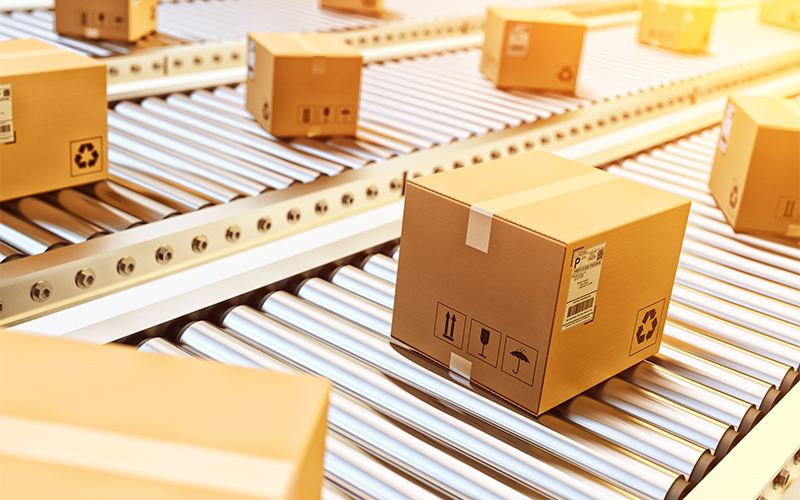Retail, CPG and Logistics
Does packaging help the resilience of the supply chain?
Product packaging is a critical component of supply chains and affects their efficiency. Packaging serves as a protection for an item during every step of its journey – from manufacturing to marketing, sales, and distribution. The transportation stage requires the greatest amount of protection. Packaging needs to be managed in an error-free and cost-effective manner for a supply chain to function smoothly. Improvements to packaging can be made by developing and adapting the packaging logistics concept. Another important dynamic affecting supply chains and digital marketing is smart packaging or digital packaging.
A supply chain that can withstand disruptions and recover quickly is a resilient and agile* supply chain. The most recent large-scale disruption has been the Covid-19 pandemic. Its impact on the global supply chain has been dramatic and far reaching, affecting workforces, suppliers, and logistics. The disruption was perhaps a timely wake-up call since it revealed the creaks in the modern supply chains and made it clear that there was work to be done in case of future disruptions.
Given the interdependency of all the parts of a supply chain, a problem in one can compromise the entire chain. For example, online shopping increased at unprecedented levels in 2020 and supply chain managers had to make rapid changes in their warehousing and logistics networks to meet this demand.
Increasing the resilience of the supply chain
Supply chains can be made more resilient by ensuring packaging is problem-free.
- Know the supplier’s strengths and weaknesses
- Diversify
- Be aware of regulations
- Protect products
- Store and transport safely If the transported products have to be stored before delivery, packaging plays an important role. Whatever the shape of the package, using the correct packaging materials and methods makes it easier to store, protect from damage and later transport with ease.
- Provide important product information With logistics packaging, an organisation can provide the transporting entity a lot of information about the product. It may be as basic as ‘this side up’ and ‘fragile’, or instructions about temperature or other detailed instructions. Logistics packaging allows the transportation of even the most complex items since it allows detailed instructions about every step. The newest entry in the packaging industry is digital packaging. As digital technologies advance more and more, digital packaging is sure to get more intricate and impressive.
Organisations should be aware of all the packaging materials that its supplier can provide and be ready to substitute if the preferred material is not available.
Reduce risks by knowing more than one supplier of a packaging material. Further, it is prudent to include a variety of materials in the packaging design to proactively avoid material shortage.
Depending on what is being transported and the destination, organisations must be aware of all regulatory considerations, especially if shipping internationally. Packages could be held up at customs if rules are not followed.
Any damage to products during transportation is costly. If mishaps occur frequently, the damage is not only monetary related, but also to the organisation’s professional reputation. Logistics packaging ensures that products reach their destination safely.
What is digital packaging?
Digital packaging or smart packaging is a combination of digital technology, 3D software, printed electronics and manufacturing protocols that are digitally controlled. It features augmented reality, QR codes, smartphone scanning and other advanced features. For example, when the QR code on a product package is scanned, a link to a website may appear. The website would contain all the necessary information about the product. The QR code could also point to a video, an email address, text, or phone numbers, all of which would be connected to the product.
Uses of digital packaging
Digital packaging allows collection of data about a product from production to disposal. It boosts interaction between the manufacturer and the consumers and tries to work through many processes of interactive engagement such as education, entertainment, and gamification. Digital packaging adds a sense of novelty to a product and that increases the chances of sale. Businesses of all kinds, from toys and food products to lawn mowers could use digital packaging.
Other than the interactive digital experiences, digital packaging can be used for better tracking through the supply chain, and higher quality and quantity of data can be included in the packaging. Similarly, scanning applications for smartphones produces far more information than a standard label can ever hold. This translates to better tracking, coding and other related information. Speed and efficiency of the supply line improves and that means a smoother supply chain. Speed to market can also be increased with digital packaging.
Disadvantages of digital packaging
Cost is a major drawback. The cost of producing videos, augmented reality animations, gamified packages and printed electronics are many times more expensive than traditional packaging. Not every organisation can afford the costs. Further, the impact of digital packaging on the environment is quite big. The more sophisticated the packaging, the more materials, electronics, and adhesives will be used. Such materials are either difficult, or often impossible, to recycle. Despite the drawbacks, digital packaging is here to stay.
Packaging keeps supply chains running
Organisations can manage more durable and resilient supply chains by integrating sound and legally eligible packaging methods into the production process. Practising the right packaging techniques is critical since packaging is not just a concept, it keeps the whole supply chain spinning smoothly with logistic process outsourcing.
* For organizations on the digital transformation journey, agility is key in responding to a rapidly changing technology and business landscape. Now more than ever, it is crucial to deliver and exceed on organizational expectations with a robust digital mindset backed by innovation. Enabling businesses to sense, learn, respond, and evolve like a living organism, will be imperative for business excellence going forward. A comprehensive, yet modular suite of services is doing exactly that. Equipping organizations with intuitive decision-making automatically at scale, actionable insights based on real-time solutions, anytime/anywhere experience, and in-depth data visibility across functions leading to hyper-productivity, Live Enterprise is building connected organizations that are innovating collaboratively for the future.






